Lymantria dispar populations are high: What conifer growers need to know
There were extremely high populations of Lymantria dispar, formerly gypsy moth, during 2020 and we anticipate elevated populations this year. Scout and treat spruce, fir and Douglas fir for gypsy moths.

Lymantria dispar, formerly gypsy moth, populations are expected to be very high again this year. According to the Department of Natural Resource’s report, “Michigan Forest Health Highlights 2020,” Michigan’s Lower Peninsula had nearly one million acres that were defoliated by Lymantria dispar. According to a map of Lymantria dispar defoliation provided in the report, the heaviest defoliation was in Montmorency, Alpena, Oscoda and Alcona counties in eastern Michigan and Manistee, Lake and Newaygo counties in western Michigan (Photo 1). Other Michigan State University Extension educators report many egg masses in more urban counties, such as Kent County, and others in southern Michigan. Michigan has not seen this much defoliation since the early 1990s when the populations of Lymantria dispar last exploded.
Lymantria dispar spends the winter in buff-colored egg masses in sheltered areas or on trunks of trees (Photo 2). These eggs hatch in the spring and the young caterpillars (Photo 3) spread to new locations by crawling to the tops of trees where they spin a silken thread and are caught on wind currents. Once they settle, they will begin to feed and develop for about seven weeks until they are approximately 1.5 to 2 inches long. Typically, this occurs in early summer—June to early July. They then enter a pupal or transitional stage.
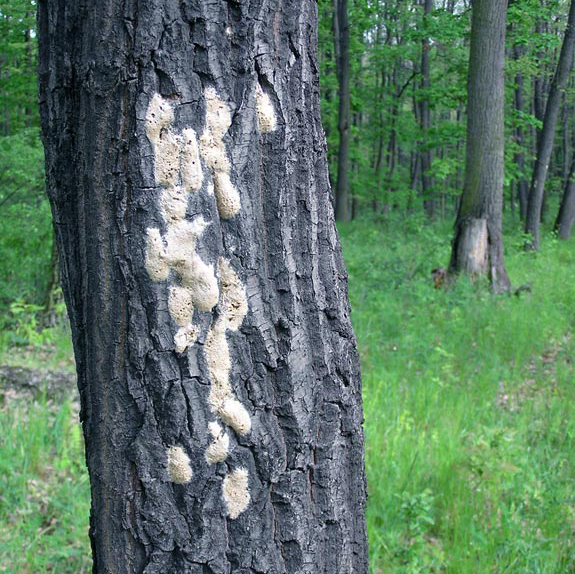

Implication for spruce, fir and Douglas-fir growers
Nursery and Christmas tree growers of spruce, fir and Douglas-fir should scout fields and any woodlots or fence rows around fields for Lymantria dispar activity (Photo 4). Lymantria dispars can cause severe defoliation of these species and reduce the aesthetic quality of the trees (Photo 5). These species are at high risk for Lymantria dispar because they are known hosts of Lymantria dispar, and the branches and needles are so dense that it is almost impossible to find 100% of the egg masses laid in the tree (Photo 6).
Nurseries that ship trees and shrubs out of Michigan must have the stock certified for the USDA Lymantria dispar Quarantine if it is shipped to non-infested areas. It is a significant pest throughout the U.S. and many counties within states and entire states have quarantines due to its presence. How do you know if the location you are shipping to has a quarantine? Check out the quarantine list on the USDA APHIS website.
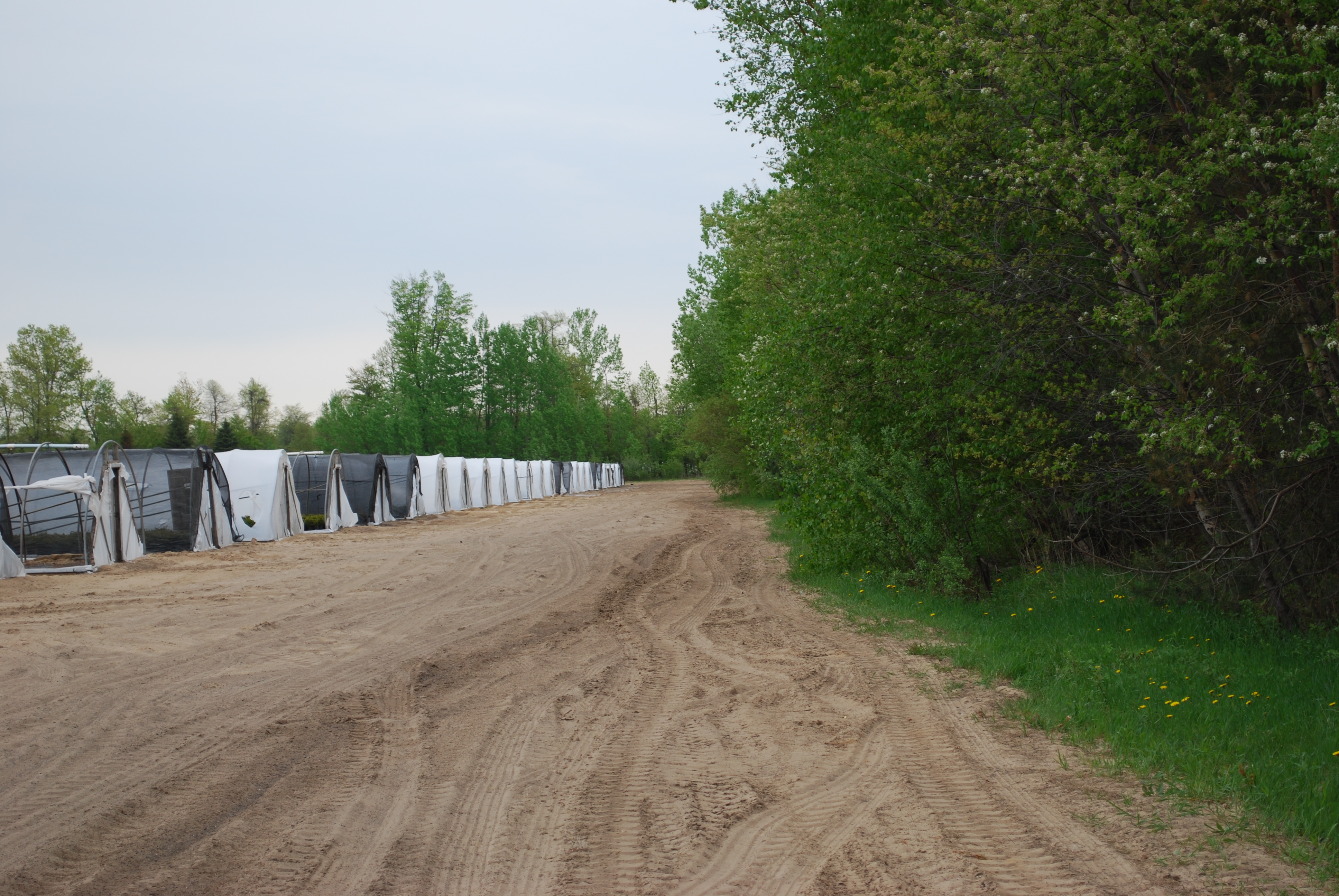
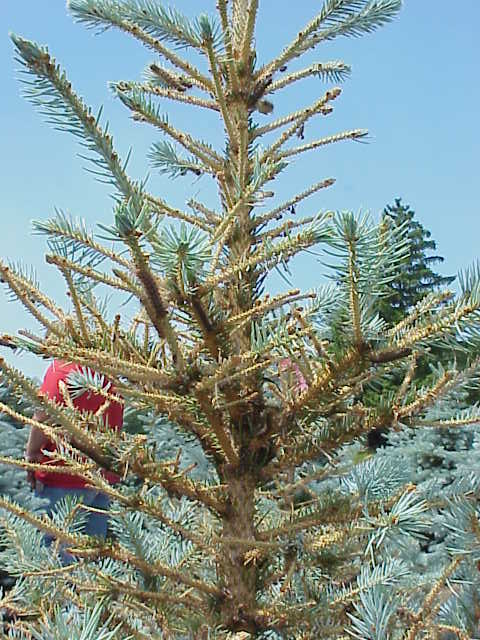
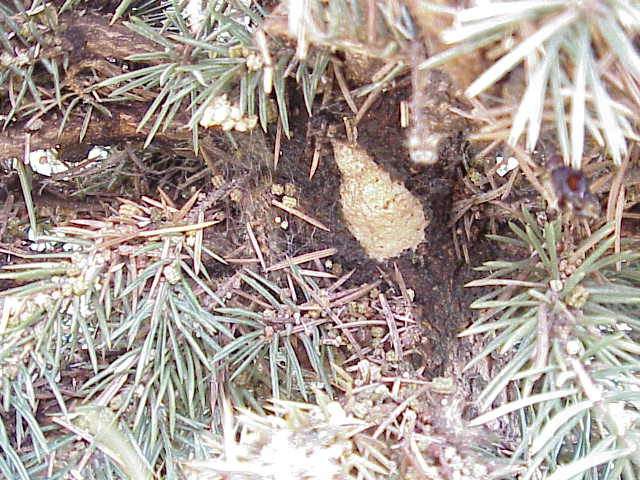
Managing Lymantria dispar
In order to scout conifers for Lymantria dispar, check out “Lymantria Dispar Caterpillars - Scout For Them Now” by Cornell University’s Tree Integrated Pest Management Program. Examine the trunk of trees to look for Lymantria dispar egg masses. The foliage is very dense, so it will be hard to find all egg masses. In addition, remember that a chemical treatment is required to ship into non-quarantined areas.
Scout neighboring woodlots or fence lines for egg masses to determine if there is a very high threat to the neighboring crop. Also, cover hoophouses with netting to prevent the spread of Lymantria dispar into the crop during production (Photo 7) and cover trailers with shade cloth prior to shipment (Photo 8).
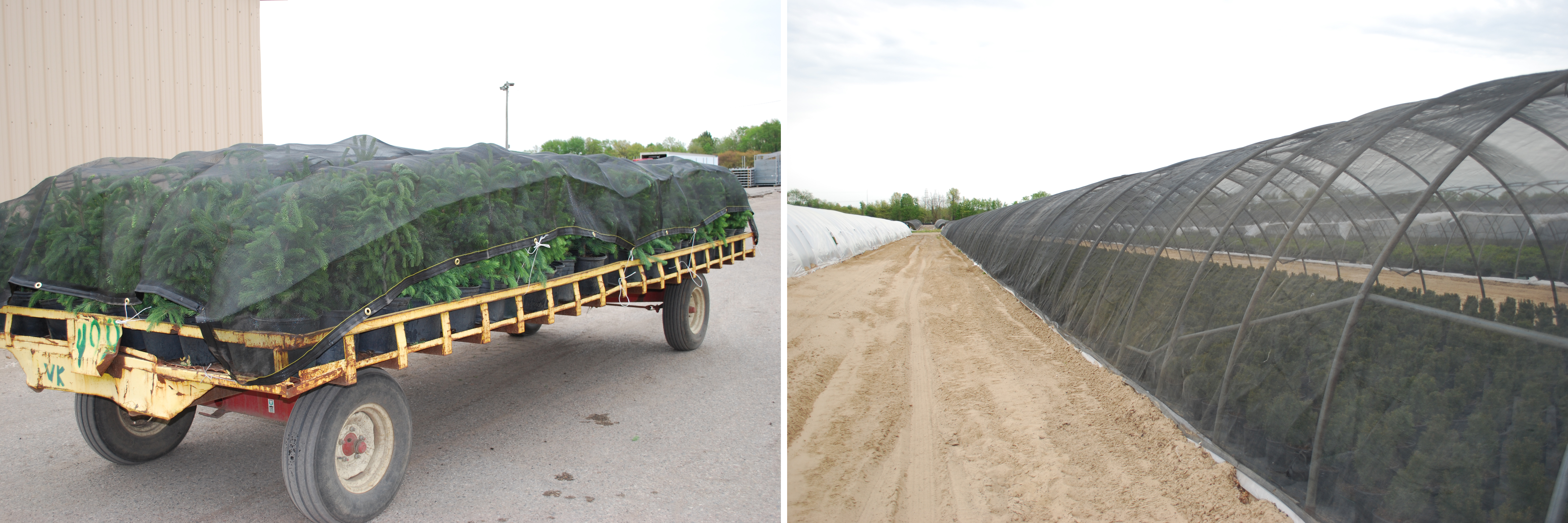
The warm weather is moving Lymantria dispar development along and we are beginning to see eggs hatching in areas of Michigan's southern Lower Peninsula. As of April 14, 2021, the counties bordering Indiana had growing degree day (GDD) totals up to 175. GDD is calculated based on the amount of heat accumulated over time (based on 50 degrees Fahrenheit) (Photo 9).
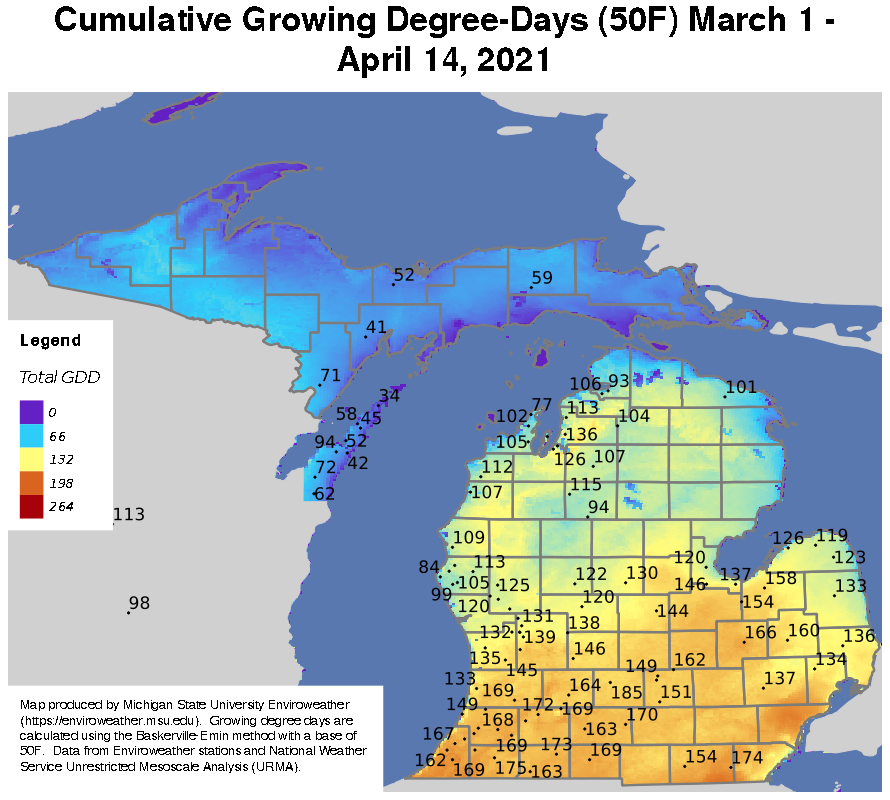
The Michigan Department of Agriculture and Rural Development (MDARD) and MSU have developed spray windows to help growers time their Lymantria dispar control. The spray window targets the time between when they disperse, develop and just before they begin to pupate. The first window to open is for the use of Dimilin. Dimilin is an insect growth regulator, disrupting the normal molting process of the insect larvae. This window opens at 150 GDD calculated from base 50 F.
The second window used in Michigan is for insecticides with a more conventional mode of action, referred to as the “all other compounds” window, which opens at 200 GDD. Because of the different modes of action, the Dimilin spray window is closed slightly earlier (700 GDD) than all other compounds (800 GDD).
Currently, the Lymantria dispar spray window for Dimilin is now open in our southern-most counties and will open for the use of other compounds as the areas reach 200 GDD (Photo 10). As a reminder, once the spray window opens, the trees cannot be shipped to non-quarantined areas until a preventive treatment is applied to control the larvae which have hatched.
Since Lymantria dispar development will vary by location and the weather, you will need to monitor development around your farm. Weather conditions will affect caterpillar development and the end date of the spray window. Remember, we have the Lymantria dispar treatment window tool on MSU’s Enviroweather. This program allows you to track the opening and closing dates of the Lymantria dispar spray window by county.
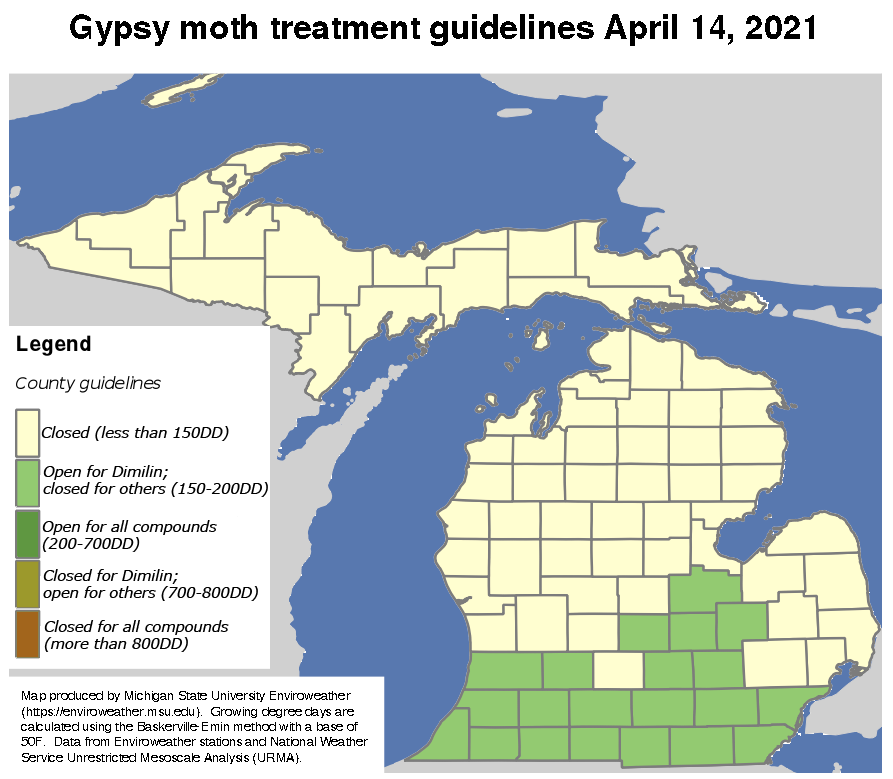
All species of cut Christmas trees shipped from Michigan, into or through areas that are not infested with Lymantria dispar, i.e., not part of the area regulated under the Federal Lymantria dispar Quarantine, must meet the following requirements:
- Spruce, fir and Douglas-fir must be treated with an approved pesticide during the required spray window period.
- Christmas tree fields of any species must be inspected by MDARD.
- The Christmas trees must come from a field or block that has been designated by MDARD as being free of viable Lymantria dispar egg masses.
MDARD annually reviews the list of compounds that are acceptable to use as regulatory treatments for Lymantria dispar. The list of approved compounds has been reviewed and will be included in a mailing to all growers enrolled in the previous year’s Christmas tree certification program. The list of approved compounds is also available online.
Growers should note that the required treatments for spruce, fir and Douglas fir also applies to those species of trees when shipped as nursery stock including balled and burlapped stock, bare root stock and containerized stock. All other species of trees do not necessarily require a treatment, however will have to pass inspection by MDARD as being free of Lymantria dispar if shipped outside of the Lymantria dispar regulated area.
Contact your local MDARD plant health inspector regarding any questions about inspection and certification of cut Christmas trees and nursery stock. Inquiries may also be sent to MDARD Plant Health at MDARD-NurseryCE@michigan.gov.



 Print
Print Email
Email

